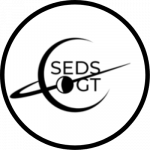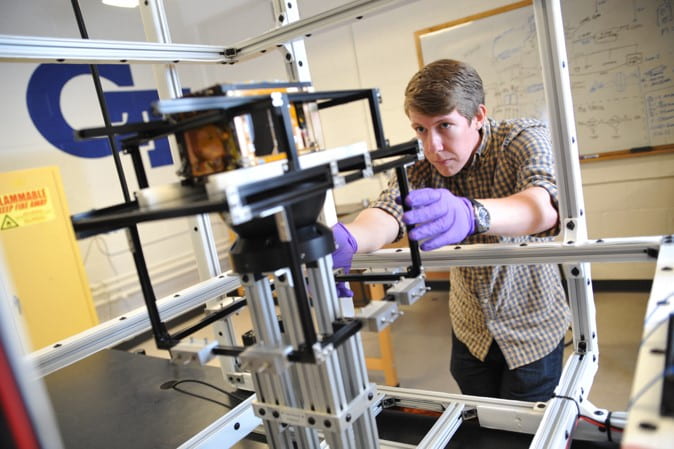Affiliated Centers and Organizations
Affiliated interdisciplinary research centers and sister organizations work together to enhance CSTAR’s mission to function as a focal point for the growth of the space industry in the state of Georgia. This page will highlight affiliated groups, as well as any large interdisciplinary grants that we have received.
Astrobiology Program
The Georgia Tech Astrobiology Graduate Certificate Program is part of an initiative linking the Georgia Tech Schools of Earth and Atmospheric Sciences, Chemistry and Biochemistry, Biological Sciences, Physics, Daniel Guggenheim School of Aerospace Engineering, and Sam Nunn School of International Affairs. The purpose of the certificate program is to expand opportunities for students in the interdisciplinary field of astrobiology, which combines astronomy, biology, geosciences, chemistry, and physics to understand the origin, evolution, and possible distribution of life in the universe.
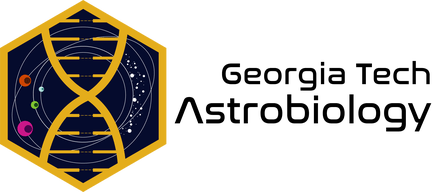
Center for Relativistic Astrophysics
The Center for Relativistic Astrophysics (CRA) is part of the Georgia Tech’s School of Physics and the College of Sciences. Our mission is to provide students with an outstanding education and training and to foster a vibrant and diverse environment for transformative research and innovative thinking. CRA researchers are engaged in investigations ranging from the large scale structure in the early universe to particle interactions. In between these extremes are black holes, and mergers of compact objects. Closer to our home in the Milky Way are exoplanets and stars. Our particular strengths are multi-messenger astrophysics with neutrinos, photons and gravitational waves, and computational astrophysics.
CRA researchers are active participants in major international collaborations, involved in operations and development of existing and future detectors, including the IceCube neutrino observatory, the LIGO and LISA gravitational wave observatories, X-ray observatories NuSTAR and Athena, and gamma-ray detectors VERITAS and CTA.

Center for Space Hardware Assembly, Fabrication and Testing(C-SHAFT)
The Center for Space Hardware Assembly, Fabrication and Testing (C-SHAFT) at Georgia Tech (GT) is focused on research, prototyping and qualification of high-reliability micro-devices designed and built by the GT research community for deployment in outer space. The facility will be the first “Class-S” cleanroom fabrication facility on campus, and will promote hands-on undergraduate and graduate education in interdisciplinary ‘space technology’ demonstration efforts.
Georgia Tech has one of the largest and most diverse academic space research communities in the USA, with ~60 active faculty from AE, ECE, ME, CHBE, CHEM, PHYS, EAS, INTA and GTRI working in collaboration through CSTAR. These researchers are developing a variety of space missions to study astrophysics, planetary science, robotics, materials science, and earth science. These explorations are most often achieved through fabrication of specialized sensors, space systems, and other micro-devices for integration within 10 cm/unit ‘cubesat’ platforms. There are more than a half dozen such campus-wide space missions in various stages of design, fabrication, qualification and operation, including: PROX-1, OrCa, RANGE, TARGIT, MISSE-11, MISSE-12, microNIMBUS,

NASA's Joint Advanced Propulsion Institute (JANUS)
JANUS will tackle core challenges to electric propulsion ground testing. Other on-the-ground challenges will also be examined, including pressure in the vacuum facility, material erosion and deposits, and electrical circuits that don’t exist in space the way they do on Earth.

Solar System Exploration Research Virtual Institute (SSERVI)
The Solar System Exploration Research Virtual Institute (SSERVI) was created by NASA as a virtual institute to address scientific questions about Earth’s moon, near-Earth asteroids, the Martian moons Phobos and Deimos, and their near space environments.
SSERVI members are domestic research institutions and international partners that use virtual technologies to enable and collaborate on new scientific efforts. Learn more here.
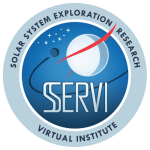
Radiation Effects on Volatiles and Exploration of Asteroids and Lunar Surfaces (REVEALS)
REVEALS is a Global Multidisciplinary Team Dedicated to Researching Todays Vital Topics for Future Manned Space Exploration
Based in Atlanta, at Georgia Institute of Technology’s School of Chemistry and Biochemistry, REVEALS is a member of SSERVI (Solar System Exploration Research Virtual Institute), a NASA program that fosters collaborations within and among competitively selected domestic teams, the broader exploration science community, and multiple international partners.
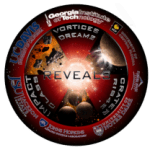
Center for Lunar Environment and Volatile Exploration Research (CLEVER)
CLEVER is the successor to the pioneering REVEALS (Radiation Effects on Volatiles and Exploration of Asteroids and Lunar Surfaces) center, both of which are part of NASA’s Solar System Exploration Research Virtual Institute (SSERVI) program. This $7.5 million NASA-funded research will study the lunar environment and the generation and properties of volatiles and dust. The interdisciplinary group of researchers supported by CLEVER will study how the solar wind and micrometeorites produce volatiles, research how ice and dust behave in the lunar environment, develop new materials to deal with potential dust buildup, and invent new analysis tools to support the upcoming crewed missions of the Artemis program.
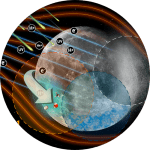
Space Policy and Security
These courses – Space Policy class and Space Security class – under the School of International Affairs examine a range of current international space policy and space security issues, including civil, military, and commercial activities. These courses look at the origins and evolution of space policy and the complex issues involved in space security and examine their strategic roles in international affairs.

Space Systems Design Lab
The Space Systems Design Lab (SSDL) at the Georgia Institute of Technology creates space technologies and advanced mission concepts that enable new missions and capabilities in robotic and human space exploration. Research focuses on space flight applications and projects. We use modern engineering tools including mission design methodologies, systems engineering, additive manufacturing, simulation, optimization, sensing, estimation and control to propose, participate in, and operate space flight missions that conduct space science and demonstrate new technologies. The SSDL is a multi-faculty, interdisciplinary research lab located within the School of Aerospace Engineering.
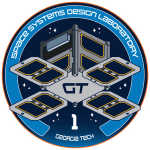
TI:GER Space Stream
TI:GER, which stands for Technology Innovation: Generating Economic Results, is a STEM concentration in Strategy and Innovation for Scheller College evening and full-time MBA students and a minor for Georgia Tech PhD students from the colleges of engineering, computing, and sciences. TI:GER is also the educational program for CDL-Atlanta.

AFRL SURI
The Space University Research Initiative (SURI) program is a first step in improving the transition of critical concepts from academia into revolutionary new military technologies for the U.S. Air Force and U.S. Space Force (USSF). SURI brings together 14 researchers and roughly 20 students from eight universities and one small business into the AFRL ecosystem to work on challenges of space power. Three of those universities — Georgia Institute of Technology, Massachusetts Institute of Technology, and Purdue University — are also part of the USSF University Partnership Program (UPP) established in 2021. The UPP seeks to establish opportunities for world-class research, advanced academic degrees, and workforce and leadership development for USSF Guardians.
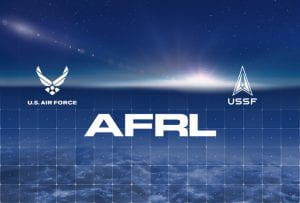
AFRL SURI
The Space University Research Initiative (SURI) program is a first step in improving the transition of critical concepts from academia into revolutionary new military technologies for the U.S. Air Force and U.S. Space Force (USSF). SURI brings together 14 researchers and roughly 20 students from eight universities and one small business into the AFRL ecosystem to work on challenges of space power. Three of those universities — Georgia Institute of Technology, Massachusetts Institute of Technology, and Purdue University — are also part of the USSF University Partnership Program (UPP) established in 2021. The UPP seeks to establish opportunities for world-class research, advanced academic degrees, and workforce and leadership development for USSF Guardians.

Student Hub
Georgia Tech is home to many great clubs, organizations, and opportunities for students who are interested in space technology and research. From the Ramblin’ Rocket Club to the American Institute of Aeronautics and Astronautics, here are some of the ways you can get involved here.
ExplOrigins
The ExplOrigins Group is an interest and discussion group with a goal to bring together young researchers with a needfully diverse set of backgrounds to discuss and explore all variety of recent topics pertaining to the Origins and Evolution of Life, the Exploration of our Solar System, and the Search for Habitable Planets beyond Earth.

Ramblin’ Rocket Club
The Ramblin’ Rocket Club (NAR Section 701 – GTRC) is one of the biggest student-led organizations in Georgia Tech’s School of Aerospace Engineering.” Members have worked “on a diverse set of projects, ranging from competitive rocketry to high altitude ballooning (HAB) for cube-satellite research. Click here to learn more.
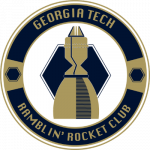
Yellow Jacket Space Program
The Yellow Jacket Space Program is a fully student-driven program that is redefining what it means to be a Yellow Jacket. Our mission is to be the first collegiate team to send a liquid-fuel vehicle past the Karman Line—the official ‘edge of space’ at an altitude of 100 km.” Click here to learn more.

GT Astronomy Club
Promoting amateur astronomy on Tech’s campus and its neighborhood. Past activities have included visits to the Fernbank Planetarium, movies, solar observing, participating in local astronomy camping events, and hosting the Boy Scouts Astronomy Merit Badge Clinic. Click here to learn more.
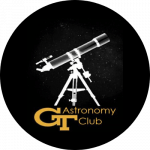
Georgia Space Grant Consortium
The Georgia Space Grant Consortium (GSGC) is a statewide network of academic, industry, and non-profit partners dedicated to maximize the number of Georgia students from all backgrounds who are well-prepared in science, technology, engineering, and mathematics (STEM) fields and who are motivated to support space and aeronautics programs vital to this nation.
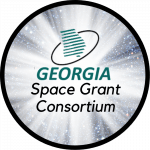
American Institute of Aeronautics and Astronautics
Georgia Tech’s student chapter of the American Institute of Aeronautics and Astronautics (AIAA) serves as a connection to the national aerospace professional organization. Events hosted by our organization are open to undergraduate and graduate students of all majors and focus on enriching students’ understanding of and appreciation for the aerospace industry. Click here to learn more.
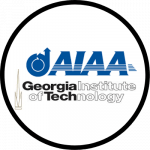
Students for the Exploration and Development of Space
he goal of Students for the Exploration and Development of Space at Georgia Tech (SEDS) is to unite an interdisciplinary community of space enthusiasts at Georgia Tech, providing our members the tools they need to connect to the global space community, become involved with the NewSpace industry, and discuss the pressing issues in space today. SEDS GT aims “to be the source of the ideas, inspiration, and community that will help you turn your interests into a future in space. Click here to lean more
